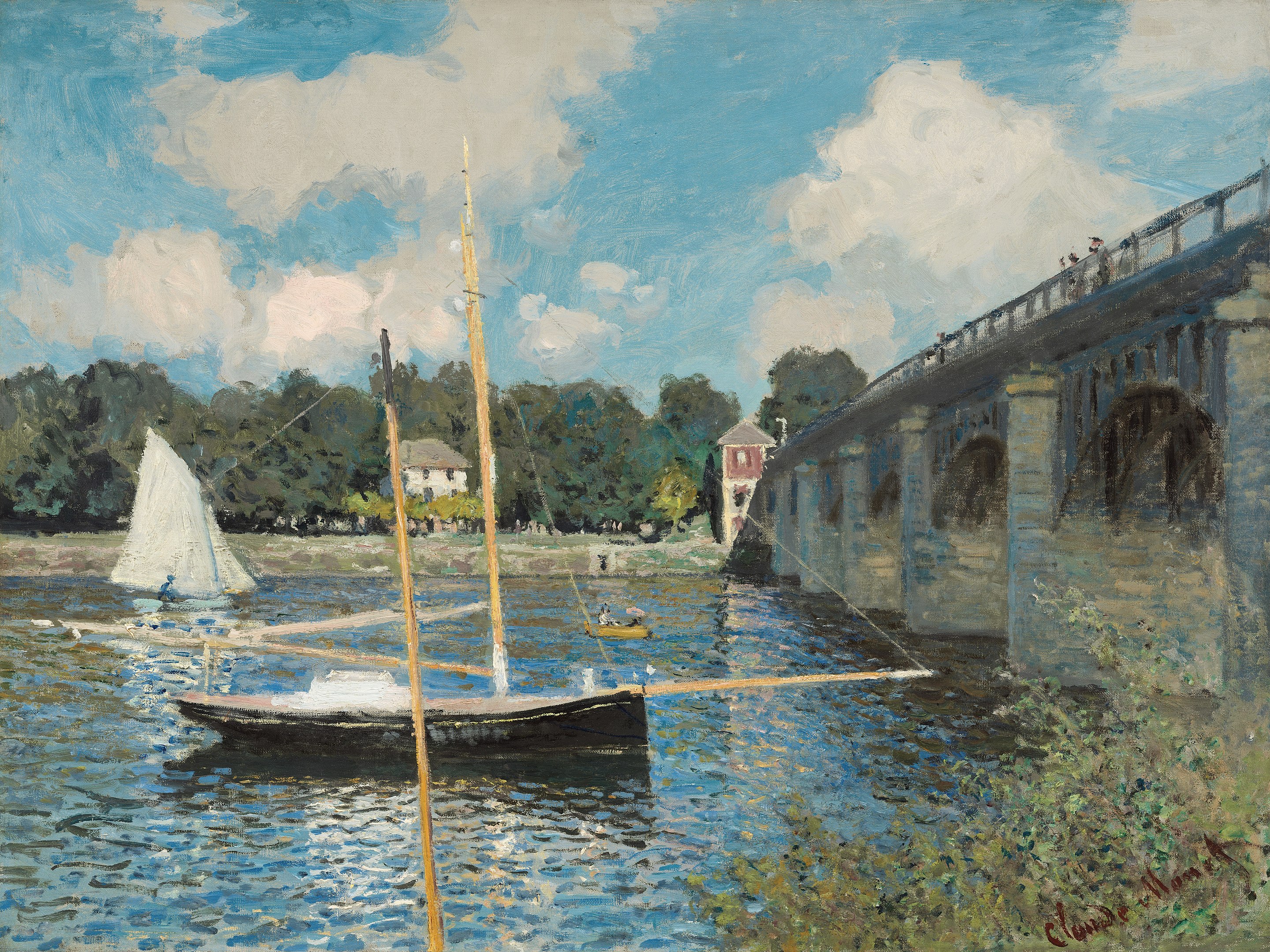Claude Monet | The Bridge at Argenteuil, 1874 | National Gallery of Art, Washington-DC
From a distance of ten feet or so, Monet's brushstrokes blend to yield a convincing view of the Seine and the pleasure boats that drew tourists to Argenteuil.
Up close, however, each dab of paint is distinct, and the scene dissolves into a mosaic of paint-brilliant, unblended tones of blue, red, green, yellow.
In the water, quick, fluid skips of the brush mimic the lapping surface.
In the trees, thicker paint is applied with denser, stubbier strokes.
The figure in the sailboat is only a ghostly wash of dusty blue, the women rowing nearby are indicated by mere shorthand.















